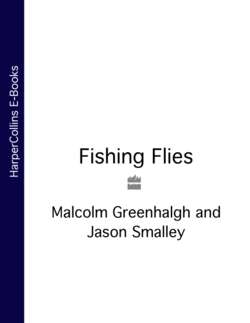Читать книгу Fishing Flies - Smalley - Страница 18
THE FIRST FLIES TO APPEAR IN PRINT
ОглавлениеWilliam Caxton was born in Kent in about 1420. In 1441 he left England for Bruges and then Cologne, where he learnt the art and business of being a printer. In 1474 he published the first book ever to be printed in the English language, The Recuyell of the Histories of Troye. Two years later, Caxton returned to England and set up a printing press in London at Westminster, where he printed 96 books. One of these was The Book of Hawking, Hunting and Blasing of Arms, published in 1486, and also known as The Boke of St Albans. When Caxton died in 1491 his German assistant Wynkyn de Worde took over the press and, in 1496, he produced a new edition of The Boke of St Albans. This included the first slender volume on angling, A Treatyse of Fysshynge with an Angle. Many years later the authorship of the Treatyse was attributed to an abbess called Dame Juliana Berners, but there is no documentary evidence that she ever existed (see Fred Buller and Hugh Falkus, Dame Juliana, the Angling Treatyse and its Mysteries, 2001). What is certain is that Wynkyn gathered the material contained in the Treatyse from across Europe, something no fictitious abbess could ever have done.
The opening page of the Treatyse of 1496. The gist of the introduction to the Treatyse is that fly-fishers live a long and happy life: ‘Here begins the Treatyse of fishing with an angle [rod]. Solomon in his parables says that a good spirit makes for a flowering age, that is, a fair age and a long one …’ Note that fishing vests and waders had not been invented in 1496!
The Treatyse outlined twelve artificial flies, but the way that they were tied is unknown. Sadly few, if any, actual flies tied before the middle of the nineteenth century have survived, for natural silk threads rot in light and humid conditions, and moth and mites move in quickly to devastate unprotected fur and feather. So any modern tyings of these flies may not be as they were tied more than 500 years ago. Two fly-tying historians produced plates of flies for Buller and Falkus (2001): Malcolm Greenhalgh and Jack Heddon. Examination of the plates in Buller and Falkus will reveal differences between their tyings – the set illustrated below were tied afresh by Greenhalgh without reference to his earlier tyings. Again there are differences in interpretation. It is quite likely that different tyers five centuries ago, having only the Treatyse as reference, would have tied the flies differently. The same applies to the other ancient flies illustrated in this section.
In the following, medieval spellings have been modernised.
FOR MARCH
THE DUN FLY
The body of dun wool and the wings of the partridge.
ANOTHER DUN FLY
The body of black wool; the wings of the blackest drake and the jay under the wings and under the tail.
FOR APRIL
THE STONE-FLY
The body of black wool and yellow under the wings and under the tail, and the wings of the drake.
IN THE BEGINNING OF MAY
A GOOD FLY
The body of red wool and ribbed with black silk; the wings of the drake and of the red capon’s hackle.
MAY
THE YELLOW FLY
The body of yellow wool, the wings of the red cock’s hackle and that of the drake dyed yellow.
JUNE
THE BLACK LOUPER
The body of black wool and ribbed with the herl of the peacock’s tail and the wings of the capon with a blue head.
THE DUN CUT
The body of black wool and a yellow band along either side; the wings of the buzzard tied on with barked hemp.
THE MAURE FLY
The body of dusky wool; the wings of the blackest mail of the wild drake.
THE TANDY FLY AT ST WILLIAMS’S DAY
The body of tandy wool and a pair of wings of the whitest mail of the wild drake.
JULY
THE WASP FLY
The body of black wool and ribbed with yellow thread; the wings of the buzzard.
THE SHELL FLY AT ST THOMAS’S DAY
The body of green wool and ribbed with the herl from the peacock’s tail; wings of the buzzard.
AUGUST
THE DRAKE FLY
The body of black wool and ribbed with black silk; wings of the mail of the black drake with a black head.
Today we rarely tie and use flies that were devised over a hundred years ago. However the flies contained in the Treatyse were reprinted and recommended by several other writers up to and including Izaak Walton in The Compleat Angler (first published over 150 years later, in 1653).
